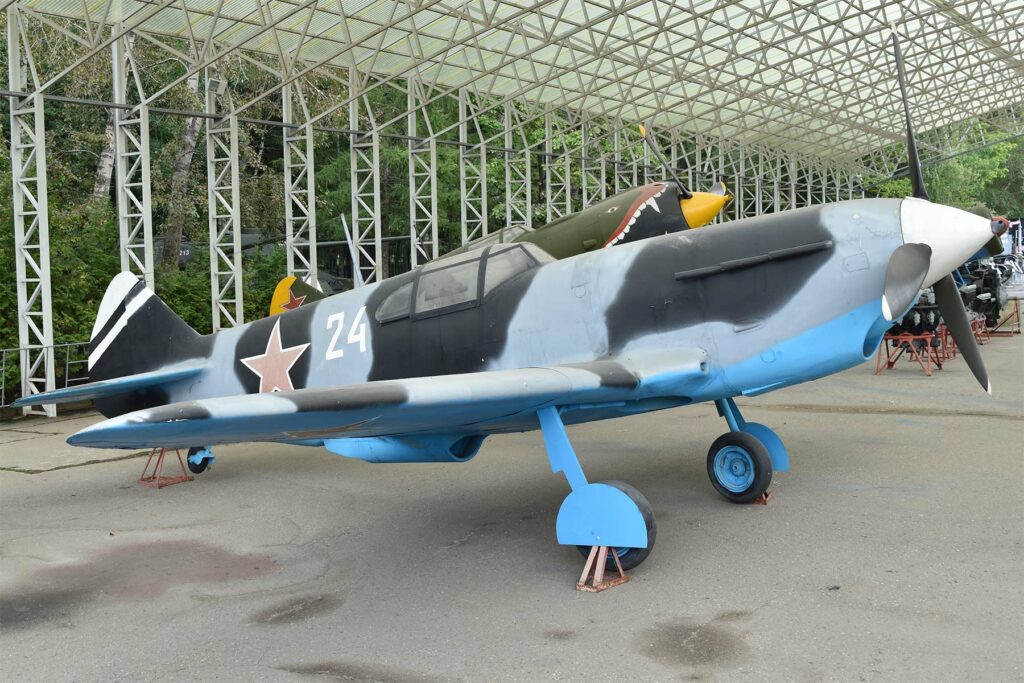The LaGG-3, a WWII-era Soviet fighter, is known for its wooden construction, Klimov M-105 engine, and a role in early Eastern Front air battles.
This article delves into the Lavochkin-Gorbunov-Gudkov LaGG-3, a Soviet fighter aircraft of World War II. It covers the aircraft’s development, design, performance, and combat use, emphasizing its role in the early stages of the Eastern Front and its evolution amidst intense aerial warfare.
The Lavochkin-Gorbunov-Gudkov LaGG-3 was a significant Soviet fighter aircraft during World War II. As a primary fighter of the Soviet Air Forces in the early years of the war, the LaGG-3 played a crucial role on the Eastern Front. This article aims to explore the development, design, performance, and military significance of the LaGG-3, providing insight into its impact on World War II aerial combat.
History of the Development of the Lavochkin-Gorbunov-Gudkov LaGG-3
The LaGG-3’s development was initiated in the late 1930s, a period marked by rapid advancements in military aviation technology and the growing tensions leading up to World War II. The Soviet Union, recognizing the need for modern and effective fighter aircraft, embarked on the development of the LaGG-3 to replace older biplane fighters and to counter the advanced aircraft of potential adversaries.
The design team, led by Semyon Lavochkin, Vladimir Gorbunov, and Mikhail Gudkov, launched the program with the goal of creating a fast, well-armed, and robust fighter. The first prototype of the LaGG-3 took flight on March 30, 1940. The development of the LaGG-3 was a response to the evolving demands of aerial warfare and the strategic necessity for air superiority.
Its development was a key part of the Soviet Union’s efforts to strengthen its air force in the face of looming global conflict.
Design of the Lavochkin-Gorbunov-Gudkov LaGG-3
The LaGG-3 was notable for its innovative design. It was one of the first Soviet fighters to feature an all-wooden construction, which was a strategic choice due to the scarcity of metal resources. The aircraft was powered by a Klimov M-105P V-12 liquid-cooled engine, producing around 1,050 horsepower (783 kW).
With a length of 8.81 meters and a wingspan of 9.80 meters, the LaGG-3’s design emphasized a balance between aerodynamics and structural strength. Its wooden construction, however, made it heavier than contemporary metal-built fighters, affecting its maneuverability and speed.
One of the design’s advantages was its robustness, which offered better survivability in combat. However, the heavy structure and less powerful engine compared to some contemporaries were significant drawbacks that affected its overall combat effectiveness.

Performance of the Lavochkin-Gorbunov-Gudkov LaGG-3
The performance of the LaGG-3 was a mix of strengths and weaknesses. It could reach a top speed of approximately 575 kilometers per hour (357 miles per hour) and had a service ceiling of around 9,700 meters (31,824 feet). The aircraft’s range was about 1,000 kilometers (621 miles), enabling it to conduct various combat missions.
When compared with contemporaries like the German Messerschmitt Bf 109 or the British Spitfire, the LaGG-3 was generally slower and less agile. However, its robust construction and adequate firepower made it a respectable adversary in the early stages of the Eastern Front.
Military Use and Combat of the Lavochkin-Gorbunov-Gudkov LaGG-3
The LaGG-3 was armed with a combination of cannons and machine guns, making it capable of engaging both air and ground targets effectively. It saw extensive use in the early years of the Eastern Front, participating in crucial battles and air engagements against the German Luftwaffe.
The aircraft’s performance in combat was mixed. While it was outperformed by more advanced enemy fighters, its robustness and armament allowed it to contribute significantly to the Soviet air defense efforts. The LaGG-3 was gradually replaced by more advanced Soviet fighters like the La-5 and La-7 as the war progressed.
The LaGG-3 was not widely exported and primarily served in the Soviet Air Forces. Its production and active service were confined to the years of World War II, after which it was phased out in favor of more advanced aircraft designs.
The Lavochkin-Gorbunov-Gudkov LaGG-3 holds a notable place in the history of World War II aviation. Its development and operational use reflect the challenges and innovations of the era’s aerial warfare. Despite its performance limitations, the LaGG-3’s contribution to the Soviet war effort, particularly in the crucial early years of the Eastern Front, underscores its significance as a fighter aircraft of its time.
Back to the Warbirds section.